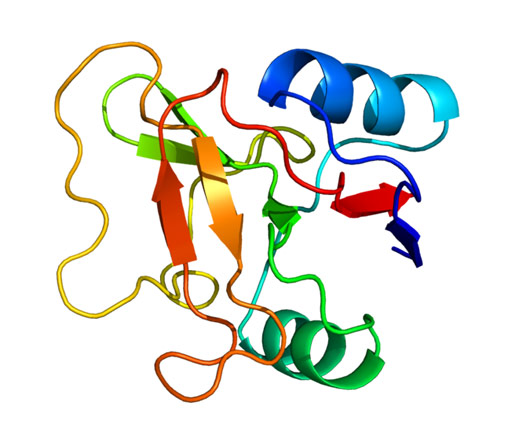Mechanism Found Blocks Activity of Anti-Cancer Lymphocytes
By LabMedica International staff writers
Posted on 10 Jan 2017
Cancer researchers have found that myeloid-derived suppressor cells, cells that help tumors avoid recognition by the body's immune system, work by stripping a molecule from the surface of lymphocytes, which they require for entry into the lymph nodes.Posted on 10 Jan 2017
Myeloid-derived suppressor cells (MDSC) contribute to an immunosuppressive network that protects tumors by disabling T-cell adaptive immunity. The prevailing view has been that MDSC-mediated immunosuppression was restricted to tissues where MDSC co-mingled with T-cells. However, in a new report, investigators at the Roswell Park Cancer Institute (Buffalo, NY, USA) found using a mouse cancer model that MDSCs in the spleen or in the blood could execute far-reaching immune suppression by reducing the expression of the L-selectin lymph node homing receptor protein on naive T- and B-cells.

Image: A model of the L-selectin homing receptor protein (Photo courtesy of Wikimedia Commons).
L-selectin acts as a homing receptor for lymphocytes to enter secondary lymphoid tissues. Ligands present on endothelial cells will bind to lymphocytes expressing L-selectin, slowing lymphocyte trafficking through the blood, and facilitating entry into a secondary lymphoid organ at that point. The receptor is commonly found on the cell surfaces of T-cells. Naive T-lymphocytes, which have not yet encountered their specific antigen, need to enter secondary lymph nodes to encounter their antigen. Central memory T-lymphocytes, which have encountered an antigen, express L-selectin in order to localize to secondary lymphoid organs where they reside ready to proliferate upon re-encountering antigen.
The investigators reported in the December 8, 2016, online edition of the journal eLife that MDSCs functioned through a contact-dependent mechanism to target L-selectin loss exclusively on naive CD4+ and CD8+ T-cells located in close proximity within the splenic compartment. Surprisingly, this mechanism also took place on both T- and B-cells as they circulated together with MDSCs within the bloodstream. These studies further showed that even modest MDSC-driven inhibition of L-selectin was sufficient to profoundly reduce homing and antigen-dependent activation of naive CD8+ T-cells in lymph nodes.
“This investigation could lead to the identification of novel therapeutic targets that bolster the body’s protective mechanisms against the development of metastatic disease,” said senior author Dr. Sharon Evans, professor of oncology and immunology at Roswell Park Cancer Institute. “These new insights may allow us to address a pressing challenge faced by physicians: how to determine which cancer patients are most likely to benefit from T-lymphocyte-based immune-therapeutics.”
Related Links:
Roswell Park Cancer Institute













